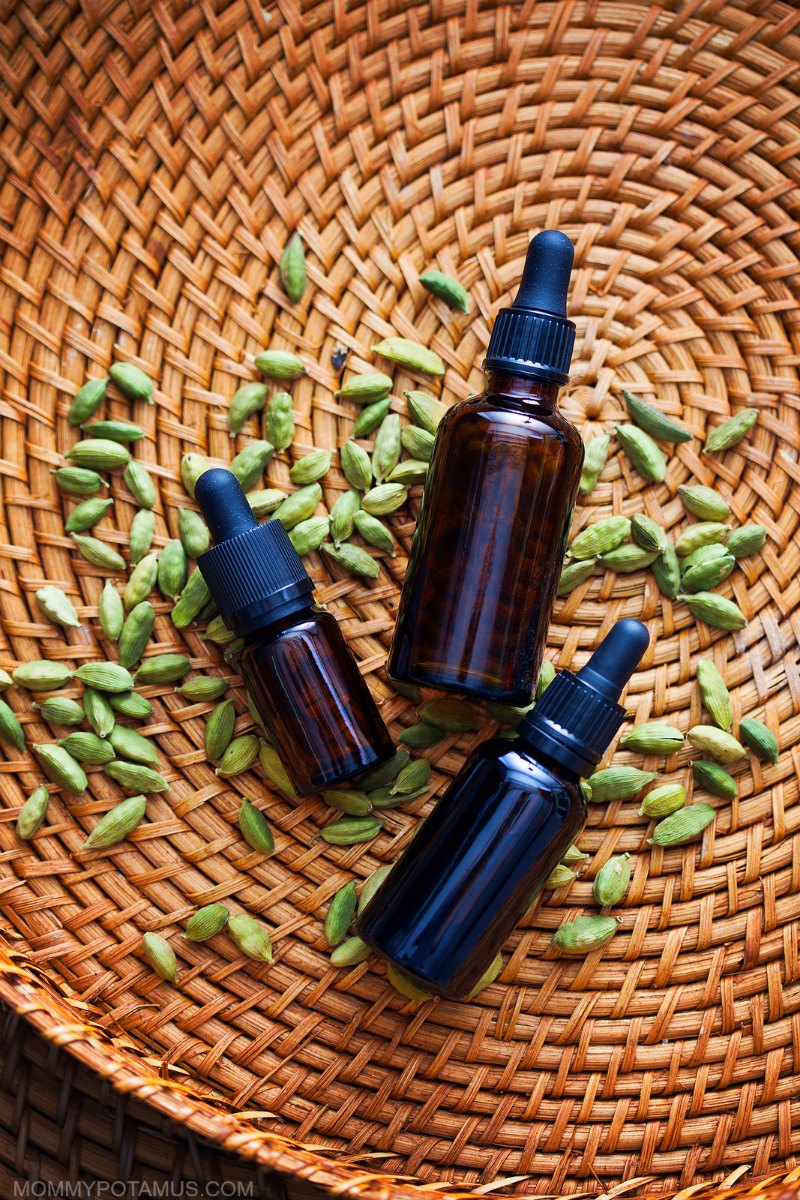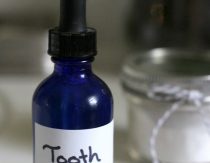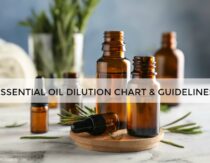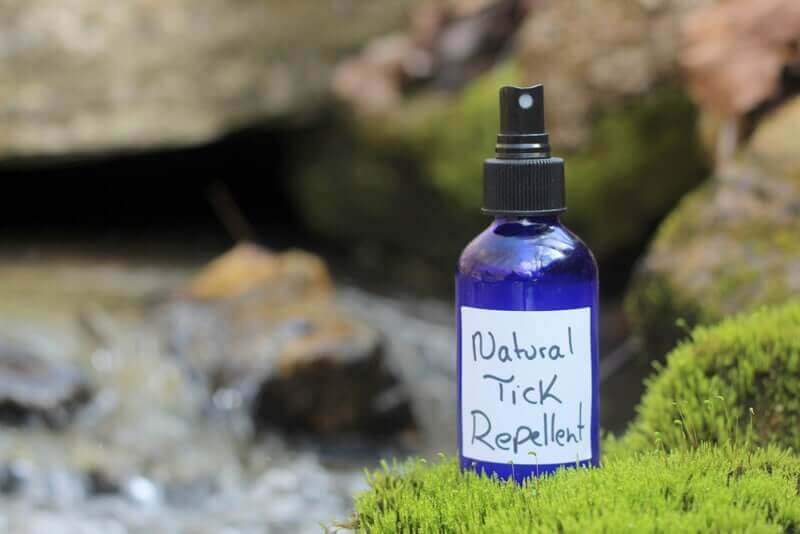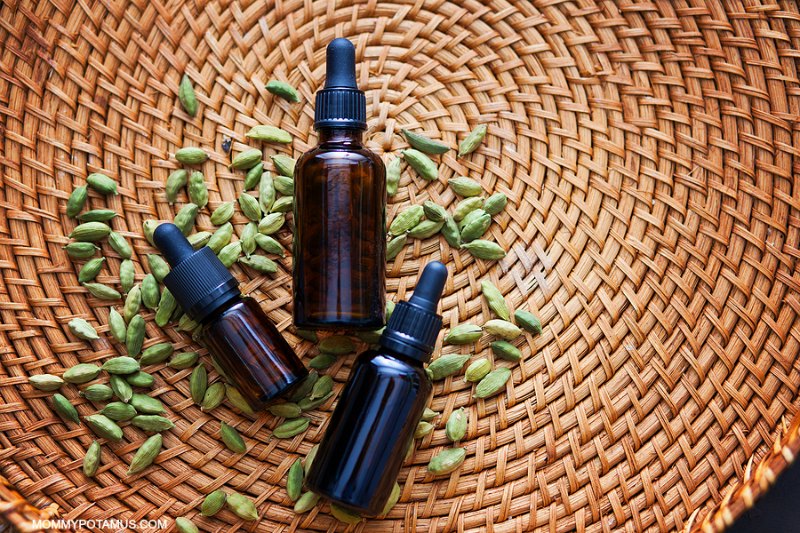
Is is just me, or is googling the safety of everything under the sun a major pastime during first pregnancies’? Petting Fluffy? Sure. Changing Fluffy’s litter box? Nope. Basil as an herb used in small amounts? Totally fine. Basil as an essential oil? Not so much.
As I mentioned in this list of essential oils that are safe for babies and children, there’s a lot of conflicting information out there regarding appropriate essential oil use with littles ones, and the mamas who grow and nurse them.
The list below was compiled based on information found in Essential Oil Safety, which was written by world renowned essential oil expert Robert Tisserand and his co-author, Rodney Young. Considered the most evidence-based resource available, Essential Oil Safety took 10+ years to write and contains over 4000 citations.
Tips For Using Essential Oils Safely During Pregnancy
“Essential oil constituents in general are likely to cross the placenta efficiently because of their favorable lipophilicity and low molecular weight,” writes Robert Tisserand in Essential Oil Safety. However, he adds that this “does not indicate a hazard per se which, for any substance, is determined by plasma concentration and toxicity.” (emphasis mine)
In other words, it’s about understanding that some essential oils are safer than others, knowing which ones to use, which ones not to use, and what usage methods are considered appropriate.
During the first trimester
According to clinical aromatherapist and Aromahead Institute founder Andrea Butje, “Since we’re assuming that essential oil constituents cross the placenta, it is generally suggested that the mother use very little essential oil during the first trimester, and only as needed at a 1% dilution. For anyone concerned about the use of oils they should be avoided completely during the first trimester.”
She adds that, “The more you use, the more you absorb… so don’t use essential oils every day during pregnancy. Reserve essential oil use for health support, such as relieving nausea, calming anxiety, or supporting sleep. By minimizing use, essential oils can be safely used in times of need.”
Methods of Use
- Skin application – properly diluted – is a preferred method of use because the essential oils are slowly absorbed over time
- Diffusion is another preferred method of use because the amount absorbed is relatively small
- Steam inhalation is sometimes considered appropriate, but it should only be used for short periods of time
- Internal, rectal, or vaginal use is not recommended
- Absolutes and solvent-extracted oils should be avoided because they may have residues in them that could be harmful
What dilution is best for pregnant and breastfeeding mamas?
In general 1% (3 drops per tablespoon of carrier oil) is recommended for whole body use while pregnant or breastfeeding, and no more than 4% (12 drops per tablespoon of carrier oil) is recommended for smaller areas. (Source: Essential Oil Safety) Many aromatherapists recommend using essential oils on an as-needed basis rather than routine daily use.

Essential Oils That Are Considered Safe For Pregnancy And Breastfeeding
Quick note: If you want a printable list of these oils, I have created the option to download them at the bottom of this post. Also, many of these oils are also found on the list of essential oils that are safe for children and babies, which simplifies things if you’re pregnant/breastfeeding and also have other little ones in the house.
- Bergamot (Citrus bergamia) – Bright, clean, uplifting citrus scent. Bergamot is phototoxic unless you purchase one that is filtered to be bergaptine-free. If not using bergaptine-free, a maximum dilution of 0.4% (about 5 drops in 4 tablespoons carrier oil) is recommended to avoid phototoxicity. (source: Essential Oil Safety)
- Black pepper (Piper nigrum) – Helpful for relaxing muscles
- Blue tansy (Tanacetum annuum) -Also called Moroccan blue chamomile, this oil has skin soothing properties. Calming. May also promote feelings of being clear-headed when pollen counts are high.
- Catnip (Nepeta cataria) – Relaxing. Supports restful sleep. Also very useful in homemade bug spray.
- Cedarwood Atlas/Atlantica (Cedrus atlantica) – Calming. Helpful for relaxing muscles
- Cedarwood Virginian (Juniperus virginiana) – Lovely woodsy scent, relaxing and beneficial for skin. It’s also one of the recommended oils in my homemade vapor rub.
- Chamomile/German (Matricaria chamomilla L) – Relaxing, helpful for sleep, may support clear thinking when pollen counts are high
- Chamomile/Roman (Chamaemelum nobile) – Relaxing, helpful for sleep, helpful for relaxing muscles
- Citronella (Cymbopogon winterianus) – Great addition to homemade bug spray. Can also be used to make outdoor citronella candles.
- Copaiba balsam (Copaifera officinalis) – Supports healthy respiratory function and helps relax muscles
- Coriander (Coriandrum sativum) – Can be helpful for soothing a mild upset tummy. Calms emotions.
- Cypress (Cupressus sempervirens) – Supports healthy respiratory function. Thought to have an emotionally grounding effect during challenging experiences.
- Dill weed (Anethum graveolens) – Supports digestion and immune function.
- Fir needle (Abies sibirica) – Supports healthy respiratory function
- Frankincense carteri (Boswellia carteri) – Immune support, helpful for soothing cuts, bruises and other injuries, relaxing, also thought to promote youthful looking skin
- Frankincense frereana (Boswellia frereana) – Immune support, helpful for soothing cuts, bruises and other injuries, relaxing, also thought to promote youthful looking skin
Frankincense serrata (Boswellia serrata) – Calming, thought to promote youthful looking skin. Supports healthy respiratory function and digestion. - Frankincense sacra (Boswellia sacra) -Calming, thought to promote youthful looking skin. Supports healthy respiratory function and digestion.
- Geranium bourbon (Pelargonium x asperum) – Very helpful in homemade tick spray, relaxes muscles
Ginger root CO2 extract (Zingiber officinalis) – Helpful for soothing symptoms associated with nausea and heartburn, supports overall digestion. Relaxes muscles. - Grapefruit/Pink (Citrus x paradisi) – Uplifting. Can cause photosensitivity. Maximum recommended topical use is 4% (4 drops per teaspoon of carrier oil)
- Helichrysum italicum (Helichrysum italicum) – Considered one of the top oils for promoting youthful skin, helpful for scars, and supportive of the immune system. Rare and somewhat expensive.
- Juniper berry (Juniperus communis) – Calming, supports healthy respiratory function
- Lavender (Lavandula augustifolia)- Calming, helpful for soothing bug bites, sunburns, and other skin irritations. Relaxes muscles, helpful for sleep.
- Lemon/cold-pressed (Citrus x limon) – Mood lifting, supports immune function. Can cause photosensitivity (a heightened/abnormal reaction of the skin when exposed to light, especially sunlight). Maximum recommended topical use is 2% (12 drops in two tablespoons carrier oil)
- Lemon eucalyptus (Eucalyptus citriodora) – Mood lifting, supports healthy respiratory function, and can also be used in homemade bug spray
- Mandarin (Citrus reticulata) – Calming
- Marjoram/Sweet (Origanum majorana) – Relaxing, helpful for sleep.
- Neroli (Citrus x aurantium var.amara) – Often used in skincare products due to it’s ability to promote beautiful skin. Thought to be helpful for easing emotional tension.
- Orange, Blood (Citrus sinensis) – Mood lifting
- Orange, sweet (Citrus sinensis) – Mood lifting
- Patchouli (Pogostemon Cablin) – Thought to promote youthful skin. Great addition to men’s personal care products, like homemade deodorant or body wash.
- Peppermint (Mentha x piperita) – Supports digestion and relaxes muscles. Okay for pregnancy but avoid during breastfeeding because it may reduce milk supply.
- Petitgrain (Citrus x aurantium) – Thought to be beneficial for skin, especially oily skin.
- Pine (Pinus Sylvestris) – Supports healthy respiratory function and relaxes muscles
- Rosalina (Melaleuca ericifolia) – Supports healthy respiratory function (similar to eucalyptus), relaxes muscles
- Rosewood (Aniba rosaeodora) – Mood lifting, soothing for minor scrapes and skin irritations.
- Sandalwood/Australian (Santalum Spicatum) – Calming, thought to be helpful for oily skin
- Spearmint (Mentha spicata) – Helpful for digestion. Maximum recommended topical use is 1.7% (about 10 drops in two tablespoons carrier oil)
- Spruce Black (Picea Mariana) – Supports healthy respiratory and immune function.
- Tangerine (Citrus reticulata) – Immune support. Bright, uplifting citrus scent
- Tea tree (Melaleuca alternifolia) – Immune support, helpful for cuts and scrapes. Also considered helpful for acne-prone skin.
- Thyme linalool (Thymus vulgaris)
- Vetiver (Vetivereria zizanoides) – Calming
- Ylang ylang (Cananga odorata) – Relaxing. Helpful when you’re in de-stress mode.
Essential Oils To Limit During Pregnancy and Breastfeeding
According to Essential Oil Safety, use of the following oils should be restricted during pregnancy and breastfeeding. The maximum recommended dilution is based on the books recommendations for once-daily, whole body application.
- Basil (lemon), Ocimum x citriodorum – Maximum recommended dilution is 1.4% (about 17 drops in 4 tablespoons of carrier oil)
- Boswellia papyrifera – Maximum recommended dilution is 1.7% (about 10 drops in 2 tablespoons carrier oil)
- Champaca (orange) absolute, Michelia champaca – Maximum recommended dilution is 17.5% (about 105 drops in 2 tablespoons carrier oil)
- Lemon balm (Australian), Eucalyptus staigeriana – Maximum recommended dilution is 3.4% (about 41 drops in 4 tablespoons carrier oil)
- Lemon leaf, Citrus x limon – Maximum recommended dilution is 1.2% (about 7 drops in 2 tablespoons carrier oil)
- Lemongrass, Cymbopogon citratus – Uplifting, works well as an addition to homemade citronella candles. Maximum recommended dilution is 0.7% (about 4 drops in 2 tablespoons carrier oil)
- May chang, Litsea cubeba – Maximum recommended dilution is 0.8% (about 5 drops in 2 tablespoons carrier oil)
- Melissa, Melissa officinals – Calming and uplifting, supports immune function. Maximum recommended dilution is 0.9% (about 11 drops in 4 tablespoons carrier oil)
- Myrtle (honey), Maleleuca teretifolia – Maximum recommended dilution is 0.9% (about 11 drops in 4 tablespoons carrier oil)
- Myrtle (lemon), Backhousia citriodora – Maximum recommended dilution is 0.7% (about 4 drops in 2 tablespoons carrier oil)
- Nasturtium absolute, Tropaeolum majus – Maximum recommended dilution is 0.26% (about 3 drops in 4 tablespoons carrier oil)
- Tea tree (lemon-scented), Leptospermum peteronii – Maximum recommended dilution is 0.8% (about 5 drops in 2 tablespoons carrier oil)
- Thyme (lemon), Thymus lanuginosus var. citriodorum – Maximum recommended dilution is 3.7% (about 22 drops in 2 tablespoons carrier oil)
- Verbena (lemon), Aloysia citriodora – Maximum recommended dilution is 0.9% (about 11 drops in 4 tablespoons carrier oil)
Want more research-backed natural remedies?
No problem, I’ve created a free ebook for you – Kitchen Apothecary: 25+ Natural Remedies Using Ingredients From Your Pantry – as a gift for signing up for my newsletter. You’ll also get updates when I post about safe essential oils for pregnant/breastfeeding mamas, exclusive gifts and coupons (I was able to give away a jar of free coconut oil to anyone who wanted it recently!), plus other goodies.
Sign up using the form below.
This article was medically reviewed by Dr. Sheila Kilbane, MD, a board-certified pediatrician, trained in integrative medicine. As always, this is not personal medical advice and we recommend that you talk with your doctor.
